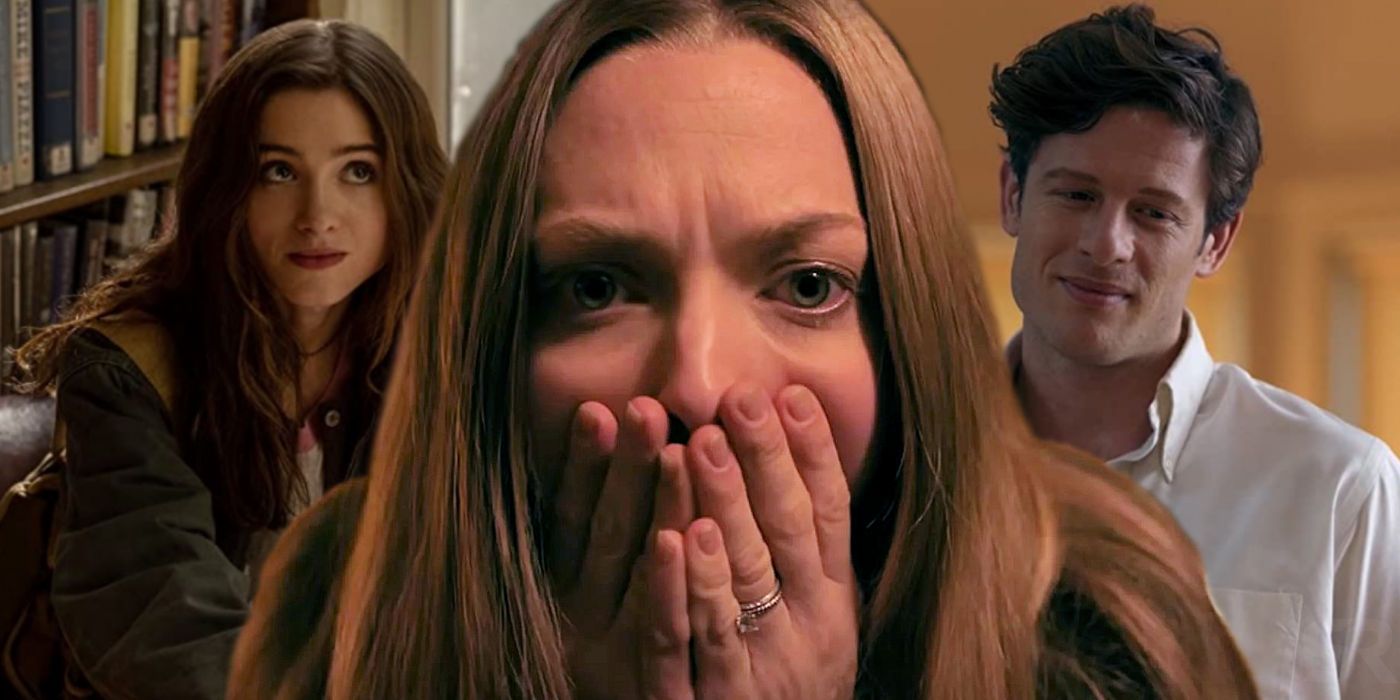
Intolerance about his wife’s eating disorder, and an off-hand remark he makes about Justine eating a lot of lasagne (!) might also indicate that George has something to do with Catherine’s condition (though it’s a bit of a stretch).īacked into a corner when his boss Floyd, (F. We also learn that he fraudulently claimed that he painted pictures done by his late cousin and also forged a recommendation letter from his university to secure his current job. He begins cheating on his wife with Willis (Natalia Dyer) and shows casually threatening behavior to Catherine’s new friend Justine (Rhea Seehorn).

However, both characters are nonetheless seduced into attacking their own families by a ghost that promises them a return to an idyllic past that never existed, meaning Things Heard & Seen’s tragic tale takes inspiration from Kubrick’s version of The Shining even without the redemptive aspect of Stephen King’s original novel.As well as the house being haunted, it becomes apparent fairly quickly that George is not a good man. Between stealing his dead cousin’s identity and artwork, constantly lying, cheating on his wife, murdering her, murdering his employer, attempting to murder his colleague, and possibly murdering the aforementioned cousin, he is far more dangerous than The Shining's lead. Both readings of the Jack Torrance character are valid, but the villain of Things Heard and Seen is more unambiguously irredeemable. Both Kubrick’s The Shining and Things Heard and Seen tell the story from his wife’s point of view, re-contextualizing the tragic but helpless figure as a dangerous monster capable of real death and destruction. Stephen King’s original novel The Shining is surprisingly sympathetic toward Jack, and the character is painted as a tragic antihero who can’t help but succumb to his vices despite his best attempts to do right by his family. Instead, both movies focus on the resilience of their respective love interests, whether through the literal escape of The Shining’s Wendy or the more metaphorical victory of Things Heard and Seen’s heroine who, like the heroine of Promising Young Woman, exposes her husband’s crimes to the world from beyond the grave. Both were always fated to their eventual demise and both are tragic figures precisely because they never knew their paths were leading to this hopeless, bleak end, but neither is granted a moment of redemption.

Where Kubrick's The Shining places Jack’s smiling face among Overlook guests and makes him part of their history, Things Heard and Seen places Norton’s conflicted villain in the same painting that he has been studying for years, as it becomes clear both characters were doomed to fulfilling their inevitable descents into madness and death.

The Shining’s sequel Doctor Sleep made the original’s ending even darker by cutting Jack’s moment of redemption from the source novel, and similarly, Things Heard and Seen has no interest in redeeming its villain. Whereas, in Kubrick’s movie, they seduce Jack into seeing his family as the problem, seeing himself as a blameless paragon of decency, and making himself the threat. Stephen King’s The Shining miniseries made the ghosts more outwardly and obviously scary to denote that they were a threat.

#THINGS HEARD AND SEEN ENDING MEANING MOVIE#
Instead, a major reading of the movie suggests that, from The Shining’s recurring Native American art motifs through to the lavish Gilded Age parties that the ghosts hold, the Overlook instead came to represent an idealized version of America’s past that sweeps its bloody reality under the rug. In Kubrick’s version of the story, the ghosts of the Overlook no longer represented Jack’s struggle with addiction, and thus his heroic self-sacrifice at the end of the movie was cut. Much of what Stephen King took issue with from Kubrick’s adaptation of The Shining was the director’s decision to make Jack Torrance a less relatable protagonist, with the famously cold and clinical director instead shutting viewers out of the character’s head.


 0 kommentar(er)
0 kommentar(er)
